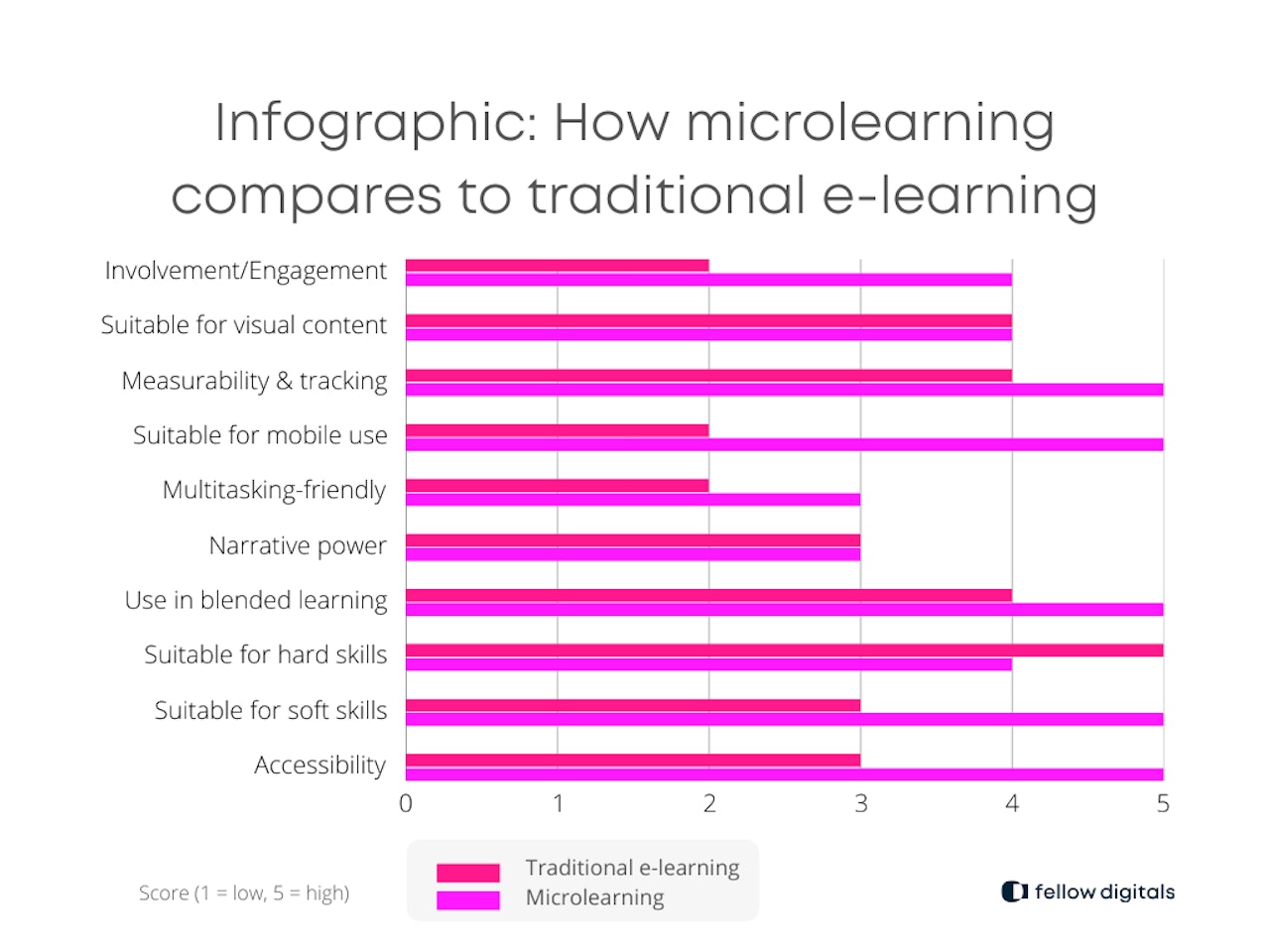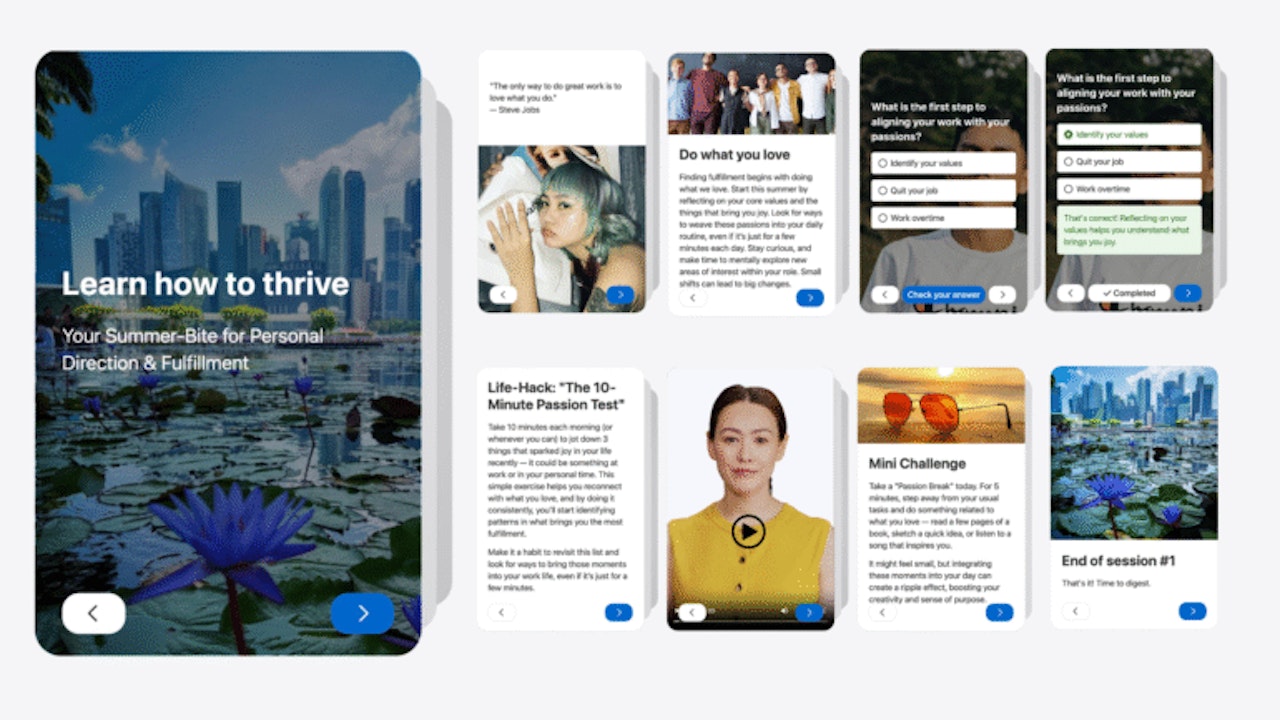From checking boxes to real learning — with a little help from AI
Blog

Lately, I find myself repeating the same pattern: I open an e-learning module, start to drift away, and then close it almost immediately. Too long, too dull, barely relevant. And apparently, I'm not alone. When I asked HR managers why so many e-learning programs fall flat, they all told me the same thing: “Because it feels like a checkbox exercise, not a real learning experience.” So it’s not just me—but it makes you think.
Dropout begins with the very first training
This isn’t just about annoyance or convenience. Behind bad e-learning lies a serious issue: employees disengaging before they even get started. And it often begins with their very first training — onboarding.
If onboarding and training aren’t done well, chances are high that new hires leave within a year. That’s costly. Which is why HR has a crucial role: deliver strong onboarding and meaningful training that truly adds value. The problem? Traditional e-learning is usually:
Boring
Time-consuming
Technically and pedagogically complicated
Rarely personalized
An infographic (generated by AI) makes it clear: microlearning consistently outperforms traditional e-learning — not just in engagement, but also in usability, visual impact, and practical application.

Why we stick with what doesn’t work
Everyone in HR wants to support growth and development. So why do we keep repeating a recipe that doesn’t deliver? Time pressure, lack of didactic expertise… it all plays a role. But the bottom line? The results often disappoint.
Here’s how it usually goes (slightly exaggerated, but still): An employee receives a mandatory invite, clicks through the content while grumbling, answers a few test questions, and walks away with… a certificate. But did they actually learn anything?
HR managers told me what they think goes wrong:
Pressure makes us choose poorly Scalable, ready-made solutions are quick and budget-friendly — but usually generic and shallow.
From learning to box-ticking In many organizations, training still equals compliance: certificate achieved? Done. Growth and behavior change fall by the wayside.
Lack of insight into what really works Too little awareness of what sustainable learning requires. Many stick to knowledge transfer, while real behavior change calls for a different approach.
Sticking to what’s familiar New learning solutions are seen as risky or complex. So the “safe” choice wins: more of the same.
And don’t forget: Ebbinghaus’ Forgetting Curve shows that we forget up to 90% of what we learn within a week, unless there’s repetition or context. Plus, LinkedIn’s Workplace Learning Report says many employees find training too long and time-consuming. Especially in summer, when work slows down, learning often gets pushed aside.
Learning can be light, fast, and practical
I don’t want to settle for disappointing e-learning. I’m curious, I want to keep growing — personally and professionally. But it has to work.
When I swipe through an Instagram carousel, I do learn something. It’s effortless, but impactful. So why should e-learning feel so heavy?
The answer is simple: make it just as digestible as those carousels. Short, visual learning snacks you can absorb in minutes. Trainers, coaches, and experts have been doing this for years on social media: micro-content mixed with visuals, quotes, quizzes, and videos. Not everything sticks, but each post leaves an impression.
That works for me because:
I can learn when it suits me — on my phone, even at the beach.
Content is light, practical, and applicable.
Most importantly: I decide what and when I learn.
Creating microlearning with AI — no hassle
We want this kind of training — but in reality, time, tools, and skills are lacking. The content is usually there, but reworking it into something visual, interactive, and effective takes too much effort.
That’s changing, thanks to AI.
New tools can automatically convert documents (articles, slides, PDFs) into bite-sized microlearnings. Think: short text blocks, matching visuals, quiz questions with feedback — all generated instantly and tailored.
That’s exactly the kind of learning I was looking for: as accessible and visual as a good Instagram carousel. Small, powerful nudges that spark thinking. Not endless theory, but digestible knowledge.
Recently, I got to try this myself. Through a project in Singapore, I gained access to an experimental AI tool from AI Singapore — a national innovation program hosted by the National University of Singapore. It explores AI applications in education, research, and business.
One feature I tested was their AI Course Generator. It automatically turns existing content into interactive training. And honestly? The results blew me away.
How it works:
Upload a document (like a PDF).
Within 2 minutes, it’s transformed into a microlearning.
The training includes interactive cards with text, visuals, and quiz questions.
You can edit it all, or just use it as is.
The outcome: a polished micro-training with sharp visuals, relevant quiz questions, and engaging copy. One example: a summer soft-skills training on workplace happiness.

And it gets better: the woman in yellow in the demo isn’t static, but an AI avatar 👆🏽— a virtual presenter who explains the training in the language of your choice. Perfect for international teams. In my case, I could roll it out in English and Malay instantly.
For me, this hit the sweet spot:
No instructional design skills needed
No design background required
No technical barriers
Still: a professional-looking training ready to launch
From specialist task to “dummy proof”
What surprised me most? How easy it suddenly becomes to build something professional without expert help. Sure, I’d still recommend letting a specialist review the final product — AI isn’t flawless.
But the fact remains: with AI you can now build professional-looking microlearnings yourself, in no time. I’ve done it several times. Believe me: it’s truly dummy proof.
And the bonus? Your colleagues will actually enjoy it. They like short, clear, visual content too. It’s like a podcast: press play, and the knowledge comes to you. Zero hassle.
Why summer is the perfect time to start
Honestly? Summer is the perfect moment to try this out. Work slows down, your calendar is lighter. Why not now?
I really recommend giving it a go — whether for onboarding, compliance training, or anything else. You’ll see how easy it is, and how much more engaging it becomes.
